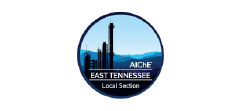TRACK 2 – PROCESS, MECHANICAL, SAFETY, ENVIRONMENT
Click on seminar title below to read the abstract
Chemical industries handle and produce energetic materials that can create hazardous explosions if a process upset occurs. Explosions produce pressure waves that are characterized as high-pressure, short duration loads that often exceed conventional loading requirements that buildings are designed for. Subsequently, unintentional blast loads can cause significant building damage or even collapse, resulting in occupant injuries or fatalities. This presentation discusses the impact that blast loads can have on buildings, industry standards for blast design, and a more cost-effective means of designing building retrofits or new buildings to mitigate risk to building occupants.
What attendees will learn:
- Learn about explosion hazards at chemical facilities
- See images and videos of blast damage to structures
- Recognize that industry standards exist for performing evaluations
- Appreciate the complexity with designing buildings to withstand blast loads
- Understand that blast designs can be done cost-effectively with expertise
Since 1936 Biazzi is the uncontested leader in engineering, design, and construction of Explosive plants, Nitration plants, Gas to Liquid Reaction plants e.g. Hydrogenation plants. Biazzi’s Gas/Liquid-Reaction plants sized from 100 litres to over 50 m3 operated from 10 barg to 150 barg have become indispensable for the success of its clients in the Specialty-, Fine-chemicals-, plastic-, pharma-,and food business. From batch to continuous, from lab to production, scale up guaranteed in shortest time is the answer to a more and more demanding market requiring novel solutions to ensure the success of clients.” Biazzi Solutions are to be found in all disciplines of the Chemical Industry.
What attendees will learn:
- Gas/Liquid Reactions Safety
- Focus on critical parameters and design considerations related to implementation of hydrogenation and other Gas/Liquid reactions for chemical applications, with particular emphasis on scale up factors, on reducing operational and capital cost and reducing the time to market.
- The approach to scale up of batch and/or continuous processes from 1lt (0.3 Gal) directly up to industrial scale 60m3(16’000 Gal ) within 1 to 4 weeks is truly unique and vital for the market seeking rapid and guaranteed scale up from lab to production. Also providing process scale up guarantees for plant capacity, product(s) qualities and consumption figures (e.g. catalyst, hydrogen, etc.).
- The focus is to reduce the operational expenditure enhancing the competitiveness while reducing investment cost.
Process intensification nowadays is considered one of the most important trends in Chemical Engineering. For distillation and absorption processes, this typically translates into increased separation efficiency and/or higher capacity in the same or lower column dimensions.
At the same time, more volatile markets in the chemical industry call for more flexibility in column operation. Therefore, an optimum between high capacity and acceptable turndown of mass transfer equipment has to be found. These two, sometimes counter-intuitive requirements, have led to various developments in designing high capacity equipment.
In the presentation, the physical fundamentals and limitations of high capacity approaches are highlighted and explained. It will be shown how these findings are transformed into “high capacity designs” of modern mass transfer devices. The focus will be on high capacity trays and structured packings.
The typical performance of RVT’s high capacity devices, characterized in several pilot plant studies, is presented. It will be shown that capacity gains of at least 20% can be achieved without significant reductions in efficiency. Typical results of high capacity designs are compared against limitations in flexibility of operation, invest and operating cost.
What attendees will learn:
- In the quest for energy conservation, the goal is to design and operate distillation/absorption columns leaner and harder.
- Identify the need for high capacity devices (trays and structured packings) in processes where conventional devices reach a performance limitation.
- Highlight of pilot plant tests with high capacity trays and structured packings to quantify performance advantages.
Evan Hinshaw, VP Sales, Apex Engineered Products
Chemical Processing Equipment has to withstand demanding process conditions for batch and continuous chemical processes. Proper material selection for pressure vessels, heat exchanger, reactors and tank can be a challenge to not only the user but the fabricator as well. Identifying all process conditions and environment the equipment is exposed to is key to designing and fabricating reliable and safe plant vessels. This presentation will review past equipment fabrication projects that APEX Engineered Products has undertaken and the steps necessary to successfully fabricated difficult materials of construction for demanding process environments.
What attendees will learn
- Develop a detail scope for equipment designers.
- Understanding the materials of construction based on their material properties.
- Impact of volatile supply chains for process equipment lead times and options to consider.
- Develop a thorough but efficient Inspection Test Plan that does not lengthen equipment lead times.
- Developing relationships with supply chains important for project scheduling and meeting test requirements.
- Case history examples APEX Engineered Products has experienced that illustrate the above considerations.
Matt Moyer, Cognitive Solutions Business Development Manager
Utilizing our proprietary human enhanced machine learning and artificial intelligence, we can provide your plant personnel with more insight into the process and draw attention to anomalies in your plant before they become issues. Since SAMGuard is notifying you at a point before the equipment becomes unsalvageable, we can help prevent hefty repair costs, and major losses due to extended downtime. The earlier you catch a failure, the less it costs to repair. SAMGuard’s Human Enhanced AI-powered early alerts give you time to prepare a plan of action, long before the discovered issues make a signi cant impact on your plant.
What attendees will learn
- A technical overview on SAMGuard’s proprietary human-enhanced machine learning
- The limits associated with using supervised and unsupervised ML without context
- How SAMGuard can add context to a machine learning model
- How SAMGuard can bring early awareness to process issues and increase productivit
- The value of increased productivity due to SAMGuard
A wide variety of industries use thermal and catalytic oxidizers for the destruction of Volatile Organic Compounds (VOCs) and Hazardous Air Pollutants (HAPs). Determining which oxidizer technology to apply relies on the flow, temperature, concentration and contaminants coming from the process. Many chemical processing processes generate VOCs and HAPs that are inert, or contain very little oxygen, and are extremely concentrated. The same facility can also have other emission sources that produce dilute streams with plenty of oxygen but not much calorific value.
Treating both of these flows in the same oxidizer system can save a substantial amount of money in capital expenditures and operating expenses. However, combining the different emission sources does present some challenges for the abatement systems. Our presentation will examine, in detail, all the benefits and potential hurdles when destroying inert and dilute emission streams in a single abatement device using real world examples and data. In addition, we will cover the various equipment options and maintenance recommendations specific to abatement projects in the chemical processing industry.
What attendees will learn:
- Which emission abatement technologies are applied on various chemical processing applications
- What characteristics of a process stream are important to know when selecting an abatement device.
- How are inert and dilute process systems handled in a single control device.
- What are the advantages and cost savings when using a single oxidizer for inert and dilute process streams.
This is PART 1 of a two part seminar by Kimre
Mist elimination is critical to proper operation of many air pollution control systems. Mist eliminators are used in virtually all scrubber systems to prevent the escape of pollutants and scrubber solution. Mist eliminators can be used on their own to prevent mist and aerosol contaminants from polluting the environment. Properly designed and installed, a quality mist eliminator will reduce production losses, corrosion of downstream equipment, and increased maintenance would be avoided. This presentation describes how mist eliminators work and how they are used in the industry. Kimre, Inc. has been designing, manufacturing and installing mist eliminators for over 45 years, the presentation will briefly cover our patented technologies in regard to mist elimination.
What attendees will learn:
- How are mists and aerosols formed?
- How do mist eliminators work?
- What are the different types of mist eliminator technologies?
- What are the features and benefits of mesh-type mist eliminators?
This is PART 2 of a two part presentation by KIMRE
Mist elimination is critical to proper operation of many air pollution control systems. Mist eliminators are used in virtually all scrubber systems to prevent the escape of pollutants and scrubber solution. Mist eliminators can be used on their own to prevent mist and aerosol contaminants from polluting the environment. Properly designed and installed, a quality mist eliminator will reduce production losses, corrosion of downstream equipment, and increased maintenance would be avoided. This presentation describes how mist eliminators work and how they are used in the industry. Kimre, Inc. has been designing, manufacturing and installing mist eliminators for over 45 years, the presentation will briefly cover our patented technologies in regard to mist elimination.
What attendees will learn:
- What are vane-type mist eliminators?
- What are some of the considerations in designing mist eliminators?
- What is the difference between a “mesh mist eliminator and a fiber bed Filter?”
- How does a fiber bed filter work?
The modern day manufacturing of chemicals relies on automation and operations technologies (OT). The newest advances in OT have yielded impressive results both in terms of efficiency and cost savings, but they are not without risk. This session will discuss the newest technologies along with some of the security issues it can introduce.
What attendees will learn:
- The evolution of chemical manufacturing and its technologies
- The security issues chemical manufacturing facilities, storage and transport face
- 5 key ways to help secure your environment so that smart manufacturing can also be safe manufacturing
Asset management is a key issue in the chemical industry. Only limited and fragmented Codes, Standards and regulatory requirements exist. There are many degradation mechanisms affecting piping, vessels and other equipment, recognizing the disconnect between construction codes and the advancements in examination methods used to find in-service degradation mechanisms.
This paper will provide an overview of ASME and API construction, repair and in-service inspection standards and show their interrelated workings. This paper will cover the use of advanced Non-Destructive Examination and implicit monitoring techniques which can provide the most robust way to minimize inspection costs and downtime..
Applying modern design techniques with modern in-service inspection plans can lead to a more accurate assessment of the equipment’s fitness for continued service, reduced maintenance costs, facilitate proper asset management of key capital equipment, and reduced downtime.
What attendees will learn:
- Overview of Standards for Asset Management
- Discussion of components of an asset management program
- Review of advanced NDE systems and capabilities in delivery systems
- Discussion of implicit monitoring to minimize inspection requirements
- Development of long-term asset management program



